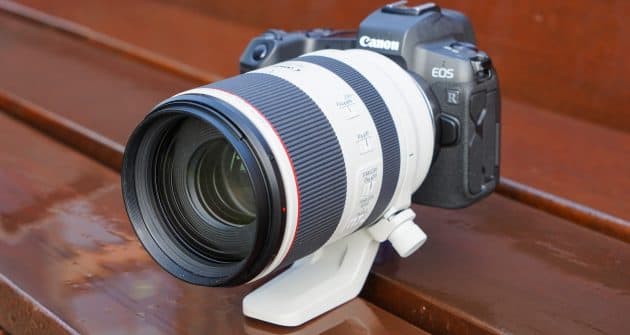Canon RF 70-200mm F2.8L IS USM review: Introduction
The first time I set eyes on the RF 70-200mm F2.8L IS USM was at the Photography Show last year where Canon had its first sample on display behind glass. The lens caught the attention of many people who visited the stand and got photographers talking about how much shorter it is in length compared to Canon’s EF mount equivalent, the EF 70-200mm f2.8 L IS III USM.

The RF 70-200mm F2.8L IS USM was tested with the Canon EOS R for the purpose of this review
Waving my press pass in the right direction allowed me to handle the mock up sample, which apart from its glass elements, was a true representation of its build quality and finish. It was at this moment it immediately became obvious how Canon had gone about making the world’s shortest and lightest interchangeable 70-200mm f/2.8 lens for interchangeable lens cameras with a full frame sensor.

Old and new. The Canon EF 70-200mm F2.8 L IS II USM (left) and the Canon RF 70-200mm F2.8L IS USM (right).
Unlike L-series EF mount zooms that cover the same focal length, the optic we’re looking at here has an extending barrel, which measures 203mm long at full telephoto and is a modest 146mm in length when fully retracted to 70mm. The questions this asks are; does this extending design compromise optical quality in any way and has Canon been successful in delivering an exceptional multi-purpose zoom for enthusiasts and professionals who use, or plan on switching to, the EOS R series?
Canon RF 70-200mm F2.8L IS USM review: Features
The lens is the third member of what Canon calls its ‘trinity’ RF lens lineup – a series of three RF optics that cover ultra-wide, standard and telephoto zoom ranges for shooting in practically any situation from landscapes, portraits and sports, to interiors, fashion and cityscapes. The other two lenses are the RF 15-35mm F2.8L IS USM and RF 24-70mm F2.8L IS USM, however it’s the RF 70-200mm F2.8L IS USM that’s likely to receive most interest from photographers looking for a workhorse of a telephoto zoom that’s well matched to subjects such as weddings, sports or wildlife.
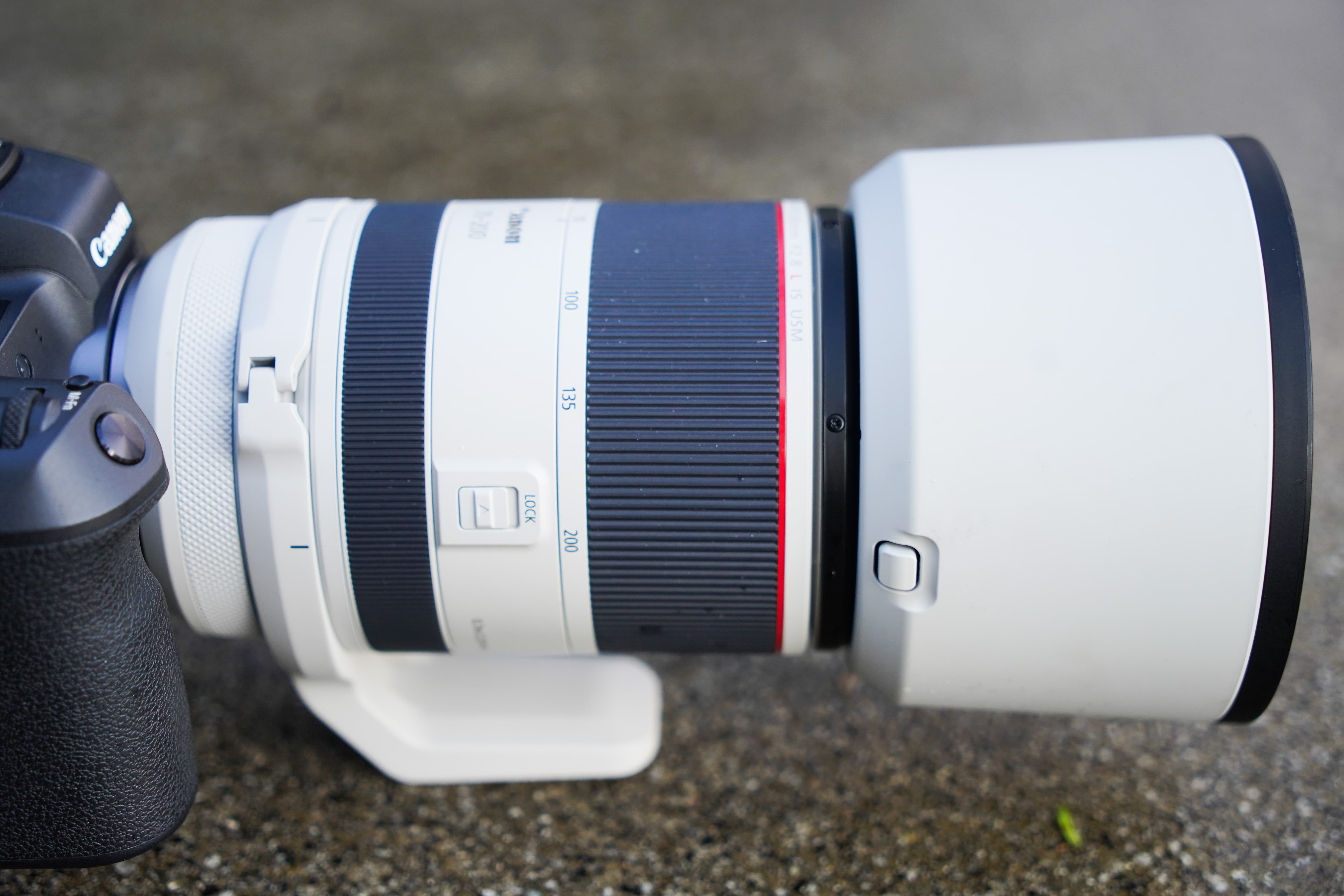
The lens is supplied with Canon’s ET-83F lens hood, which features a lock release button
Working out 28% lighter and 27% shorter than the existing EF-mount model, the RF 70-200mm F2.8L IS USM features an optical construction comprising 17 elements in 13 groups, with nine diaphragm blades. Canon has used aspherical and Super UD elements within the construction to eliminate spherical aberrations and ensure optimum results are achieved through its aperture range of f/2.8-f/32. In addition, Canon has employed its Subwavelength structure coating (SWC) as well as its Super Spectra Coatings to reduce unwanted internal reflections, which in turn reduces ghosting and flare that can be problematic when shooting towards the light.
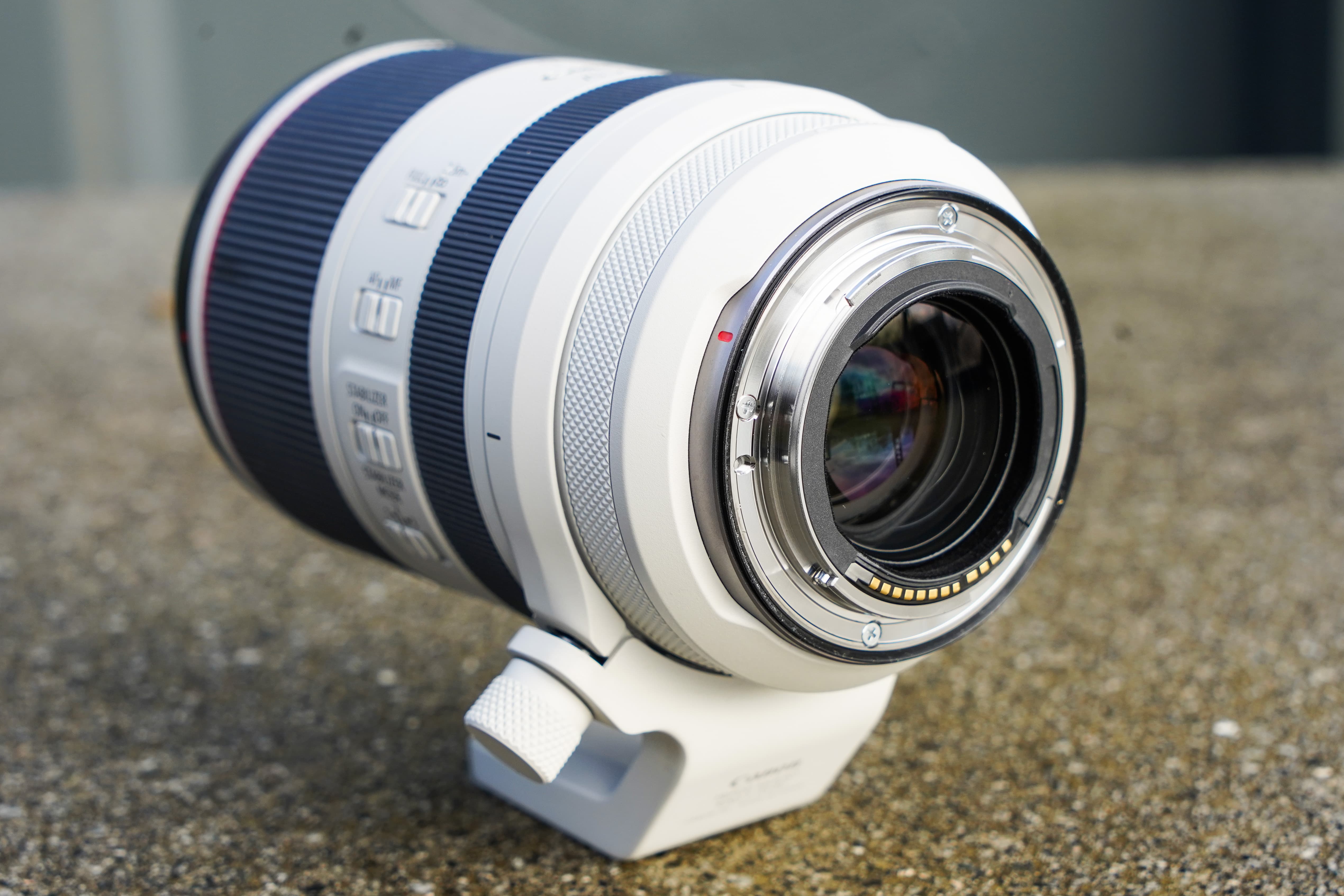
A view of the rear of the lens showing the twelve metal contacts and knurled control ring
To ensure the performance of its focusing system lives up to its professional status, Canon has incorporated an electronic floating focus control mechanism for the first time, which drives two lens groups individually using Dual Nano Ultrasonic Motors (USMs). The idea is to improve focus speed and reduce power consumption while making focusing smoother and quieter for stills and video shooting.

The zoom ring and focus ring are both rubberised. The focus distance limit switch, AF/MF switch, image stabilizer on/off switch and image stabilizer mode switch are located in-between
The lens is also equipped with optical image stabilisation – an essential feature given that no EOS R model to date features in-body image stabilisation (IBIS). The image stabilizer enables users to shoot 5-stops slower than would otherwise be possible and presents three modes. Mode 1 is intended for static subjects, with mode 2 detecting sweeping movements when panning and switching off the IS correction in that direction to help deliver sharper results. With mode 3, the IS only activates when you fully press the shutter button, which can save the system trying to compensate for random, rapid lens motion and is beneficial to sports photographers who move between subjects quickly.
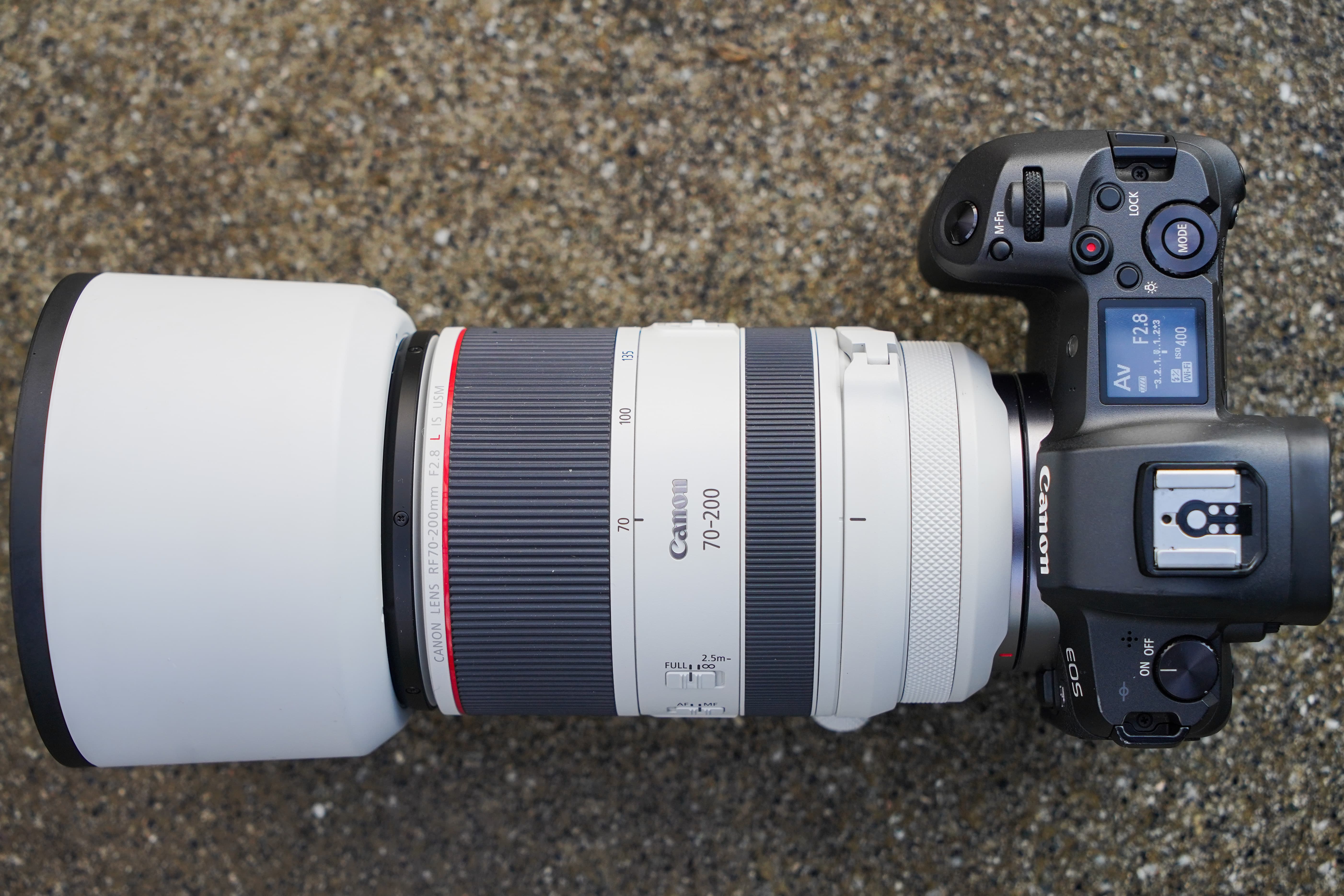
An overhead view of the lens in its retracted position with the hood attached
Other features to note include its control ring (something I’ll touch on in detail shortly), its 70cm minimum focusing distance, focus limit switch (full or 2.5m to infinity) and acceptance of screw in filters and adapters via its 77mm filter thread. It comes with a plastic ET-83F lens hood that has its own lock release button, front and back caps and the usual type of soft case Canon supplies with all pro-spec lenses.
Canon RF 70-200mm F2.8L IS USM review: Build & Handling
Up until now, all the RF lenses Canon has made for its EOS R system have featured a black barrel. In keeping with the distinctive look of many Canon professional L-series EF lenses that have a white finish and distinctive red ring, this is the first RF lens to gain a white heat shield coating to help reflect sunlight and keep the lens cool in hot temperatures. Canon hasn’t officially confirmed it, but it does suggest future pro-spec telephoto lenses in the RF line-up are also likely to be finished in white.
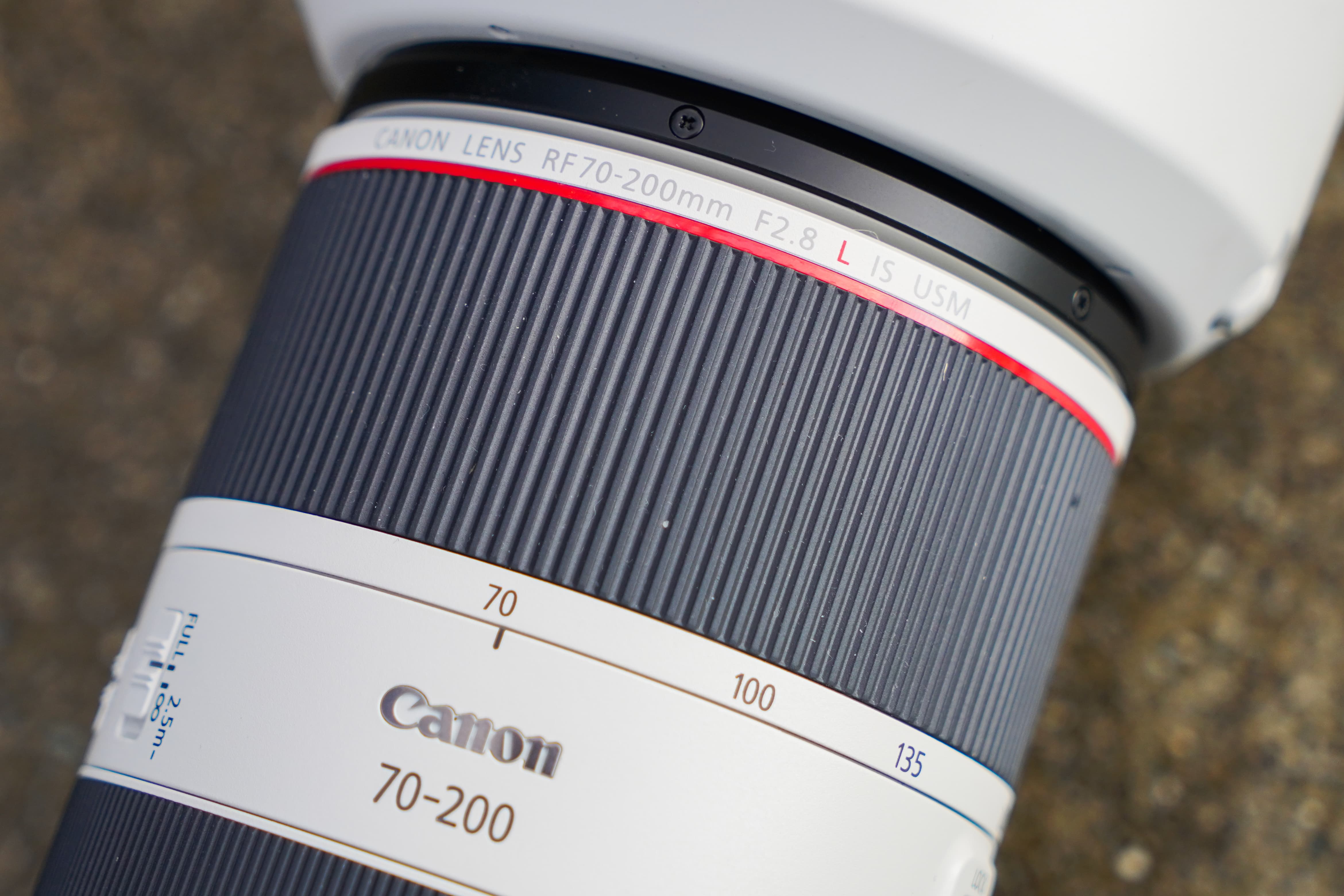
The front of the barrel embellishes the red ring that’s synonymous with Canon L-series lenses
Colour aside, it presents a robust and purposeful feel. The tripod mount can be rotated out of the way by loosening the knurled release screw and it’s this screw that you pull outwards if you’d like to remove it altogether. My only criticism regarding the collar are its lack of click stops every 90 degrees and that the centre point on the lens, which is used to help align it, isn’t obvious and is quite tricky to see in low-light conditions.

A side view with the zoom set to 70mm
The black on white focal length and switch markings are printed rather than engraved and both the zoom and focus ring are rubberised. To help differentiate between them the camera is raised to your eye, the focus ring features noticeably finer grooves. In-between the zoom and focus rings there’s a zoom lock switch that locks the zoom at 70mm, but our test sample didn’t suffer from zoom creep so it was rarely used. As for the switches at the side, they all operate positively and are well spaced from one another.
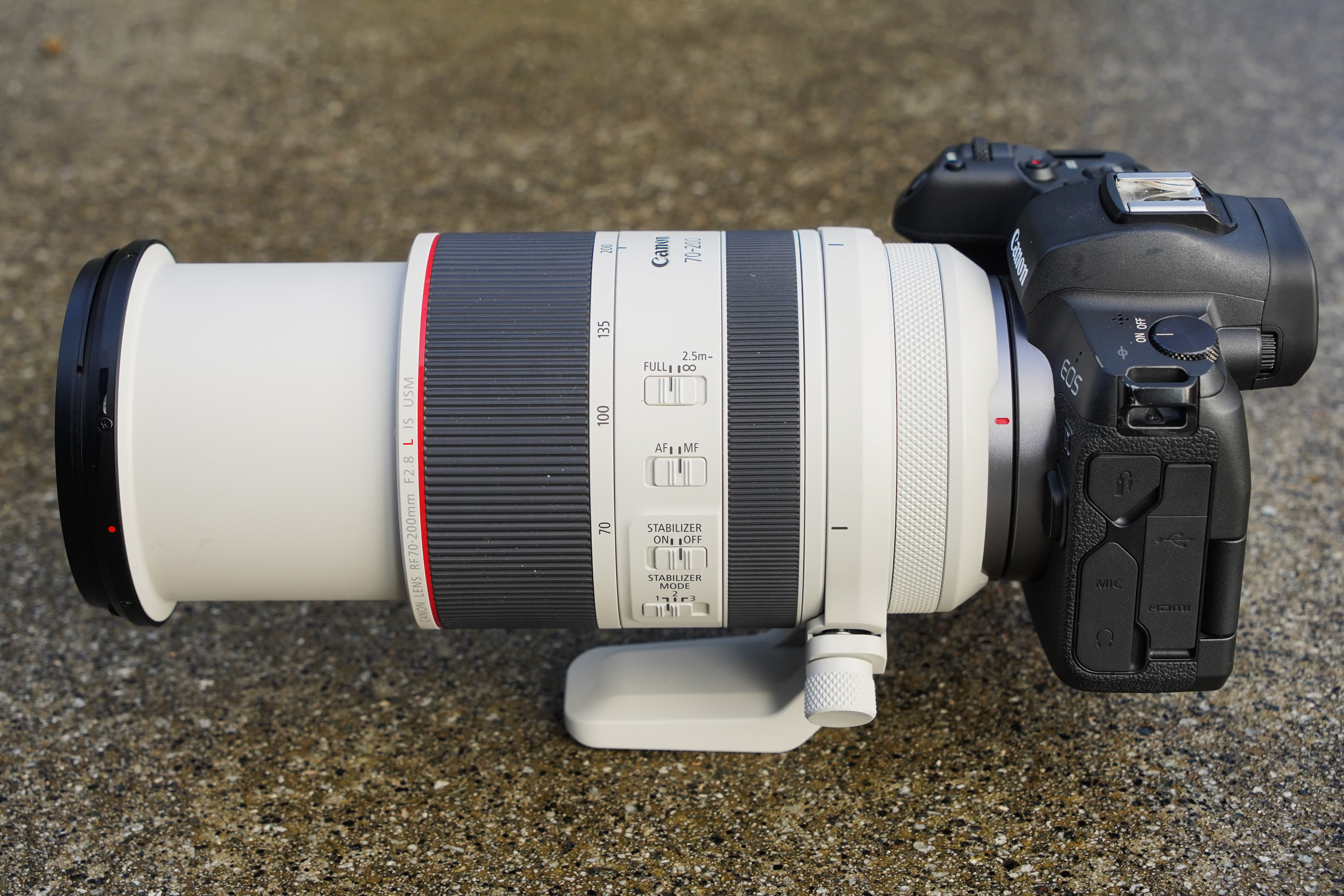
A side view with the zoom set to 200mm
Moving towards the rear brings us to the control ring. From the customize dials option in the menu of the camera this can be setup to control aperture, shutter speed, ISO, exposure compensation, either directly, or by holding the metering button if you’d like to avoid accidental or unintentional changes. Being located as close to the rear as it is there’s a bit of a knack to using it. I personally found it easiest rotating it with my left thumb underneath the barrel while still offering adequate handheld support.
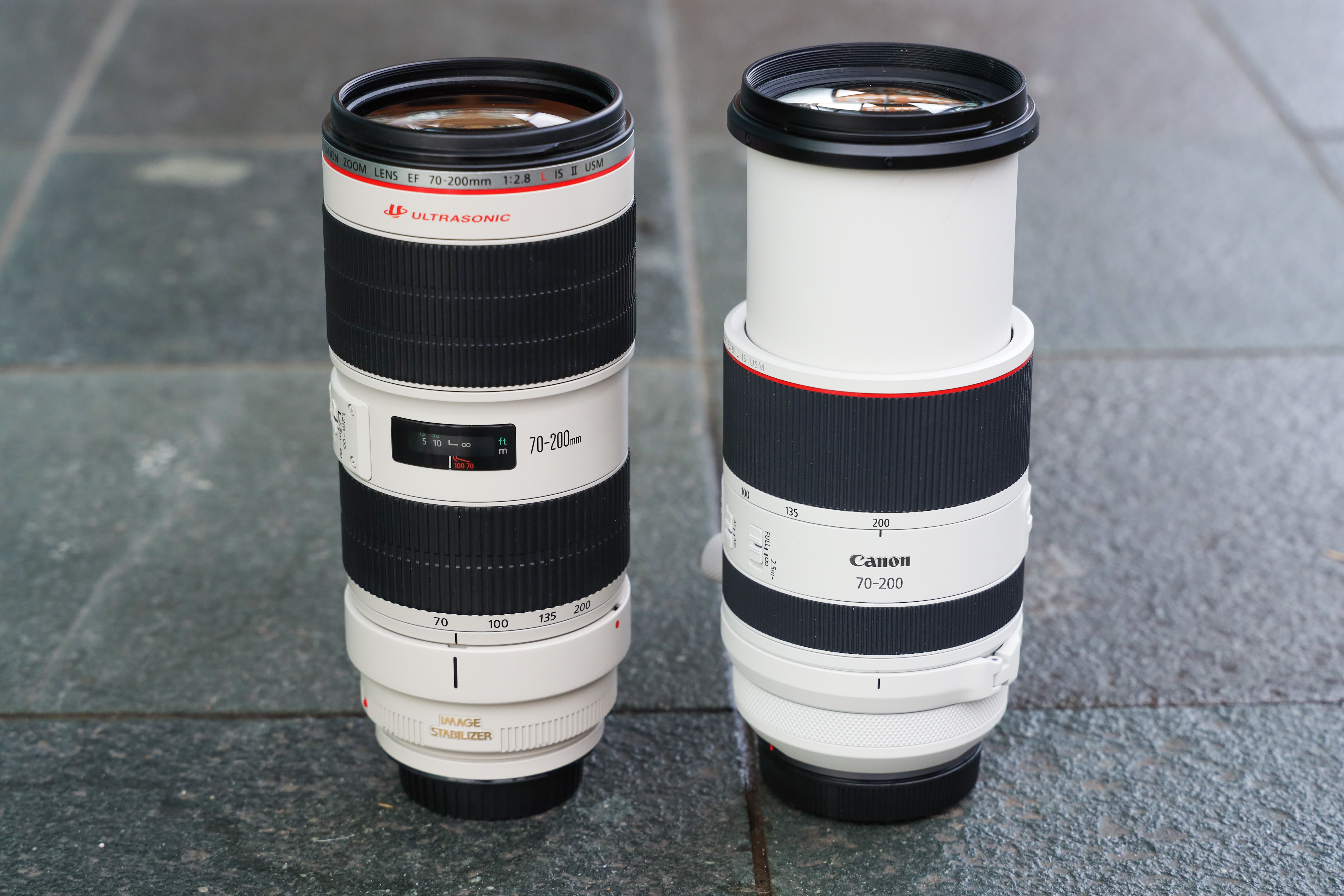
The Canon RF 70-200mm F2.8L IS USM (right) is slightly longer than the older Canon EF 70-200mm F2.8 L IS II USM (left) when the barrel is fully extended to 200mm
In use, the short throw and consistently smooth motion of the zoom ring across a quarter turn makes it easy to get to your desired focal length very quickly. The main concern, as with all zooms with extending barrels, is the air that can be pumped onto the sensor when the zoom is retracted. The lens is weather sealed, which should prevent the ingress of dust being a major issue, but I was aware of the fact that the lens does push air – most noticeable when you retract quickly from 200mm to 70mm. As a precaution I set the EOS R’s sensor clean cycle to operate when the camera was switched on and off.
Canon RF 70-200mm F2.8L IS USM review: Image Quality
It didn’t take long to establish that the RF 70-200mm F2.8L IS USM is a seriously impressive performer, delivering the kind of image quality and sensational sharpness you’d expect from an L-series lens that will set you back a pretty penny. Those who might be considering it will be overwhelmed by the sharpness it resolves into the corners and our Image Engineering tests suggest it’ll be a fine match for future high-end models that exceed the Canon EOS R’s 30.3-million-pixel resolution.

Canon EOS R, Canon RF 70-200mm F2.8L IS USM at 110mm, 1/100sec at f/2.8, ISO 1600
Using the lens at f/2.8 creates an attractive depth to images and as you extend the barrel and increase the focal length you’ll observe the fall-off in focus occurs quickly. It should also be noted the front element doesn’t rotate as the lens is extended or retracted, which is good news for anyone who might use it with screw-in filters or slot-in filters via a filter holder and adapter ring.

100% magnified view of the image above showing the impressive centre sharpness at f/2.8
Sharpness figures at 200mm at f/2.8 dip just below those recorded at 70mm and 135mm. Stopping the lens down between f/4 and f/5.6 yields the best sharpness at the long end of the zoom. Corner sharpness is very close to matching the sharpness in the centre of the frame at f/5.6 right across the zoom range.

Canon EOS R, Canon RF 70-200mm F2.8L IS USM at 170mm, 1/2500sec at f/2.8, ISO 400
Users will find f/11 delivers good edge-to-edge sharpness too, but the introduction of diffraction does start to soften finer detail beyond this point all the way to its minimum aperture of f/32.
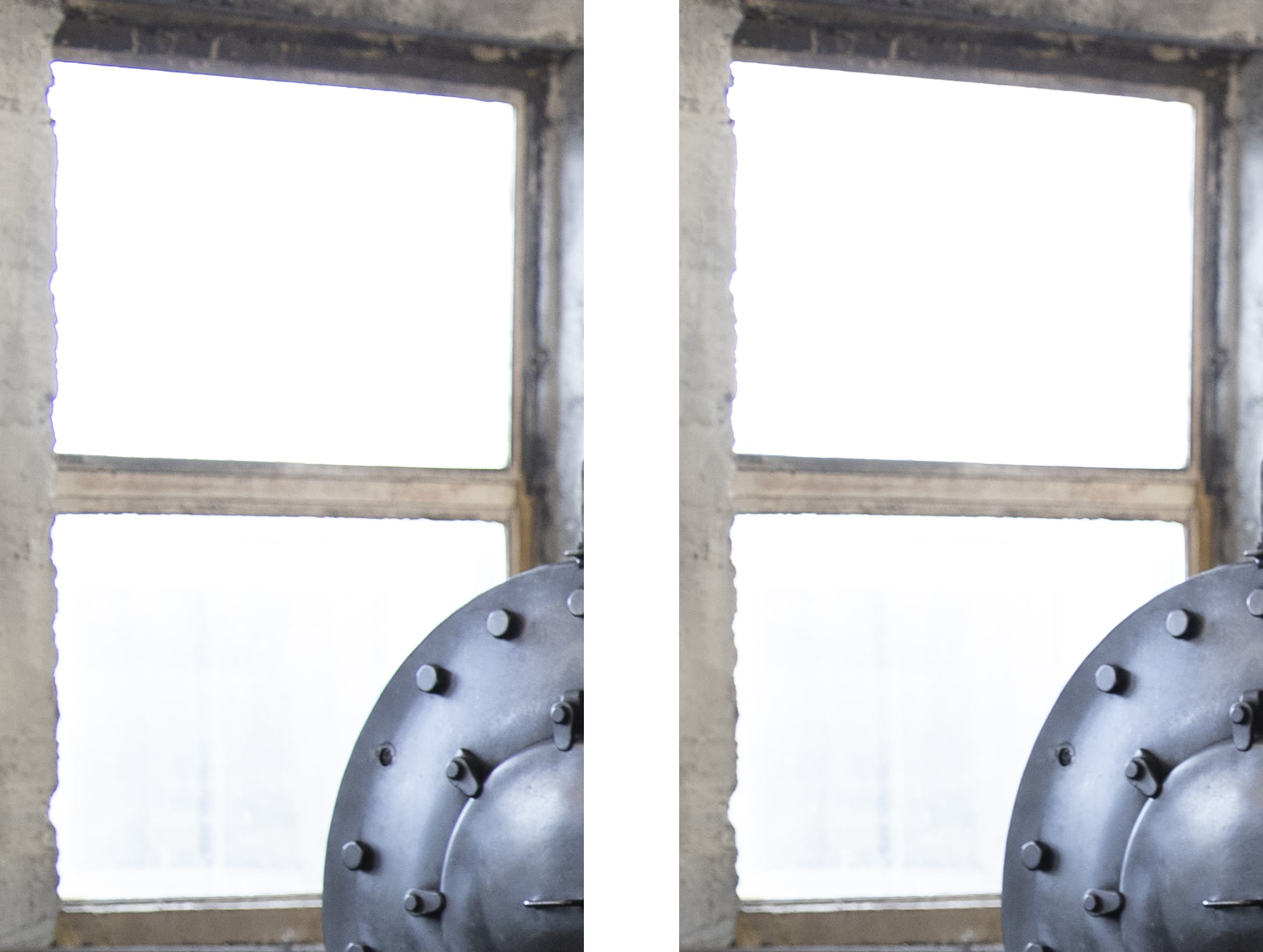
Some minor purple and green fringes of colour were observed along high contrast edges, seen here around the window frame (left). This was removed in Lightroom and Adobe Camera Raw from the Lens Corrections tab. Corrected version can be seen above (right)
Inspecting raw files at high magnification revealed subtle traces of purple and green fringeing along high contrast edges, but this turned out to be a quick one-click fix by placing a tick in the remove chromatic aberrations box in Lightroom.
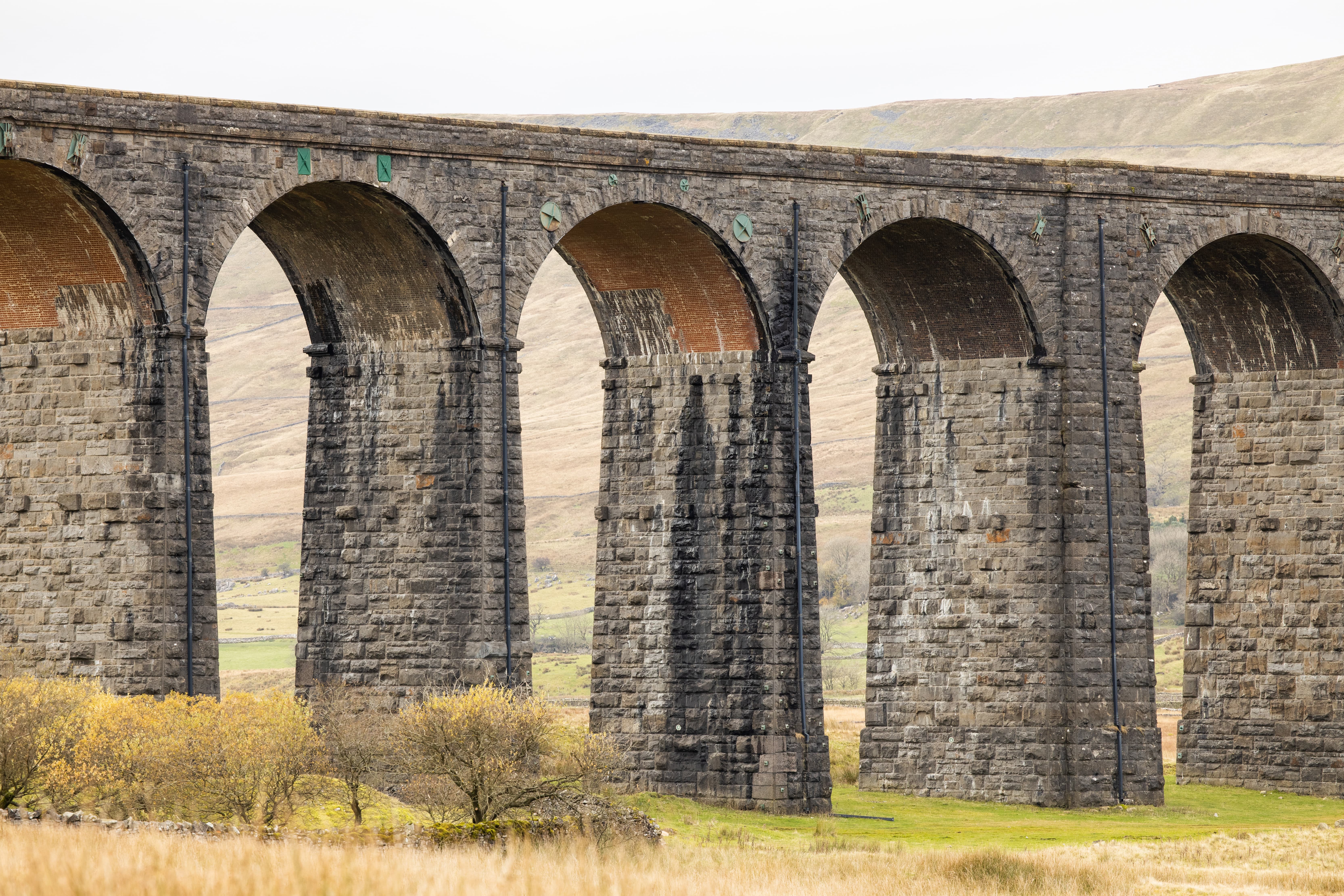
Canon EOS R, Canon RF 70-200mm F2.8L IS USM at 180mm, 1/200sec at f/5.6, ISO 400
Vignetting is evident when the lens is used at f/2.8 and we measured corners to be 1.2EV darker than at the centre at 200mm. The lens isn’t averse to displaying mild barrel distortion at the wide end (70mm), which turns to pincushion distortion beyond 100mm. This isn’t a major concern though and will be easy to correct for as soon as a lens profile is added to the list of those already available for other Canon RF lenses.
Canon RF 70-200mm F2.8L IS USM review: Resolution, shading and curvilinear distortion
Resolution
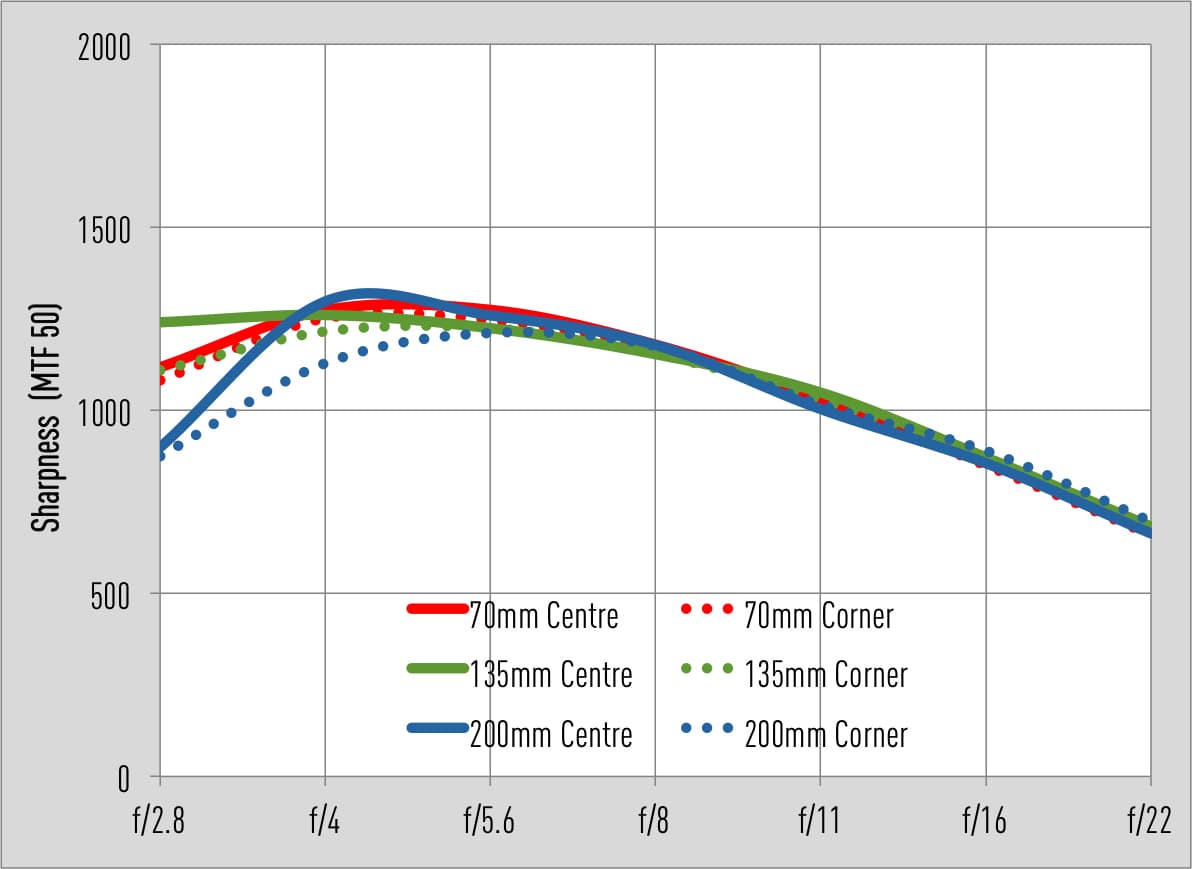
The results from our Image Engineering tests are very impressive indeed, with a quite astonishing performance at the corners. Our plotted results tell us it’s sharper in the centre between 70mm and 135mm at f/2.8 than it is at 200mm. Sharpness improves at 200mm by stopping down to f/4. By f/5.6 the corners are close to being as sharp as the centre right across the zoom range.
Shading
Use the lens wide open at its maximum aperture of f/2.8 and you can expect corners to appear approximately 0.6EV darker at 70mm, 1EV darker at 135mm and 1.2EV darker at 200mm. Stop down to f/4 and you’ll notice the affect of vignetting subsides and can’t be traced in real-world images by the time you reach f/5.6. Users shooting in the JPEG format can correct for corner shading in-camera by enabling the Periphereral Illumination option within the lens aberration correction settings from the camera’s main menu.
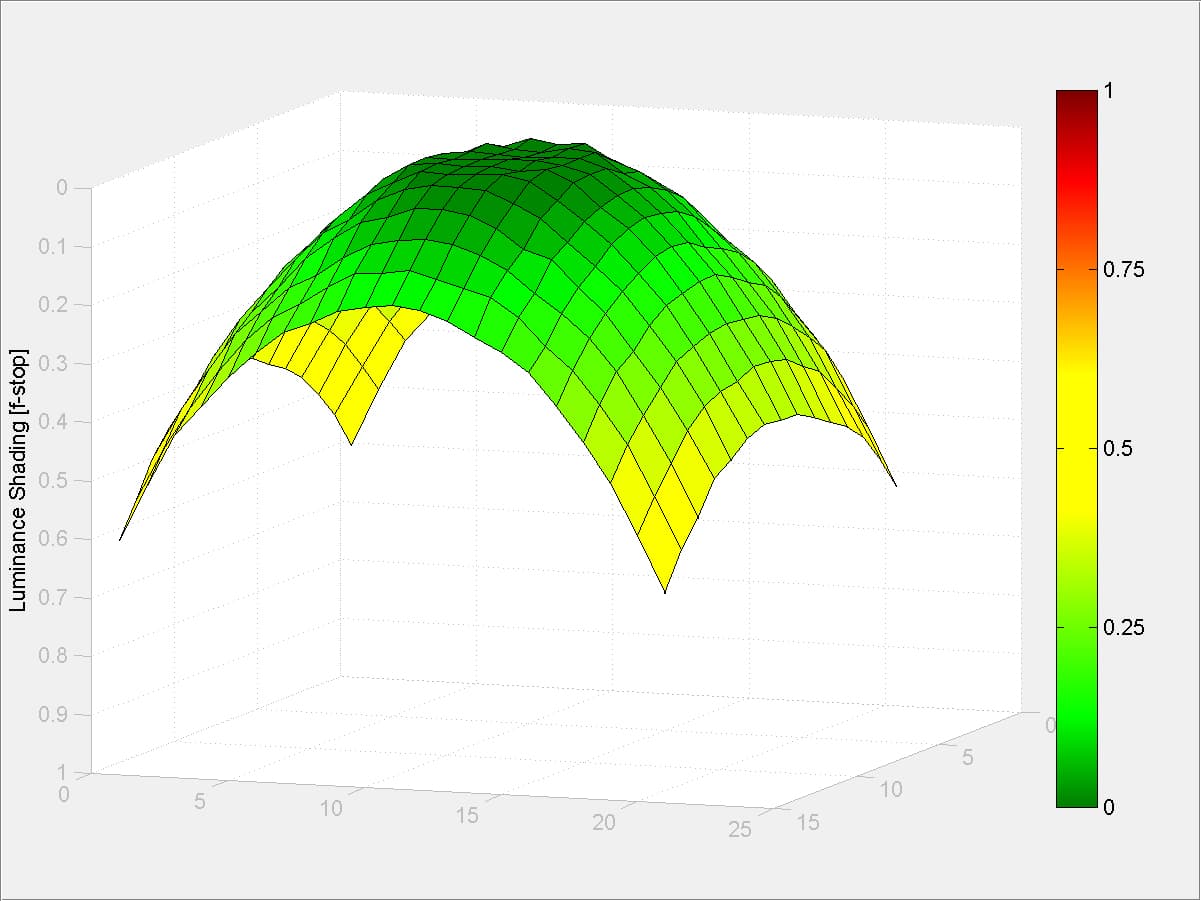
Canon RF 70-200mm F2.8L IS USM, 70mm @ f/2.8
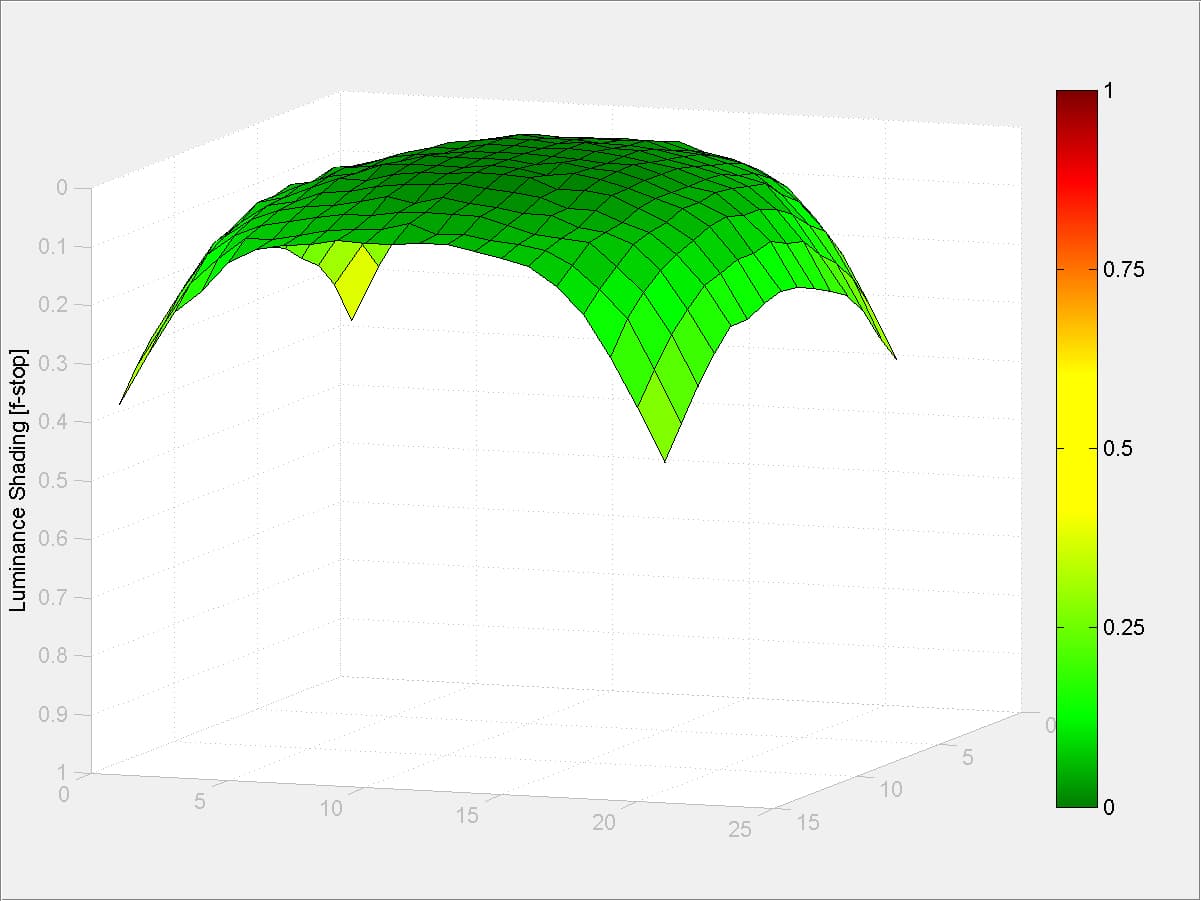
Canon RF 70-200mm F2.8L IS USM, 70mm @ f/4

Canon RF 70-200mm F2.8L IS USM, 70mm @ f/5.6
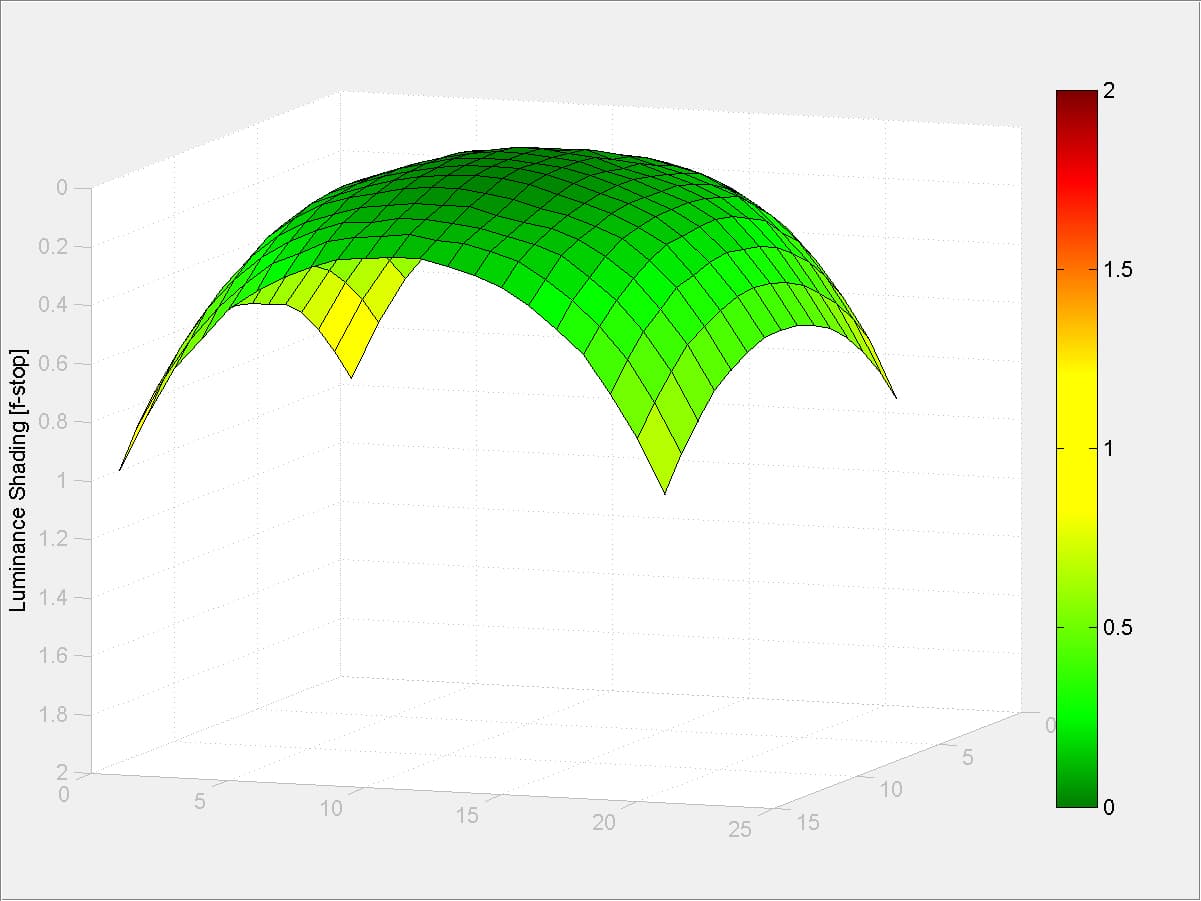
Canon RF 70-200mm F2.8L IS USM, 135mm @ f/2.8
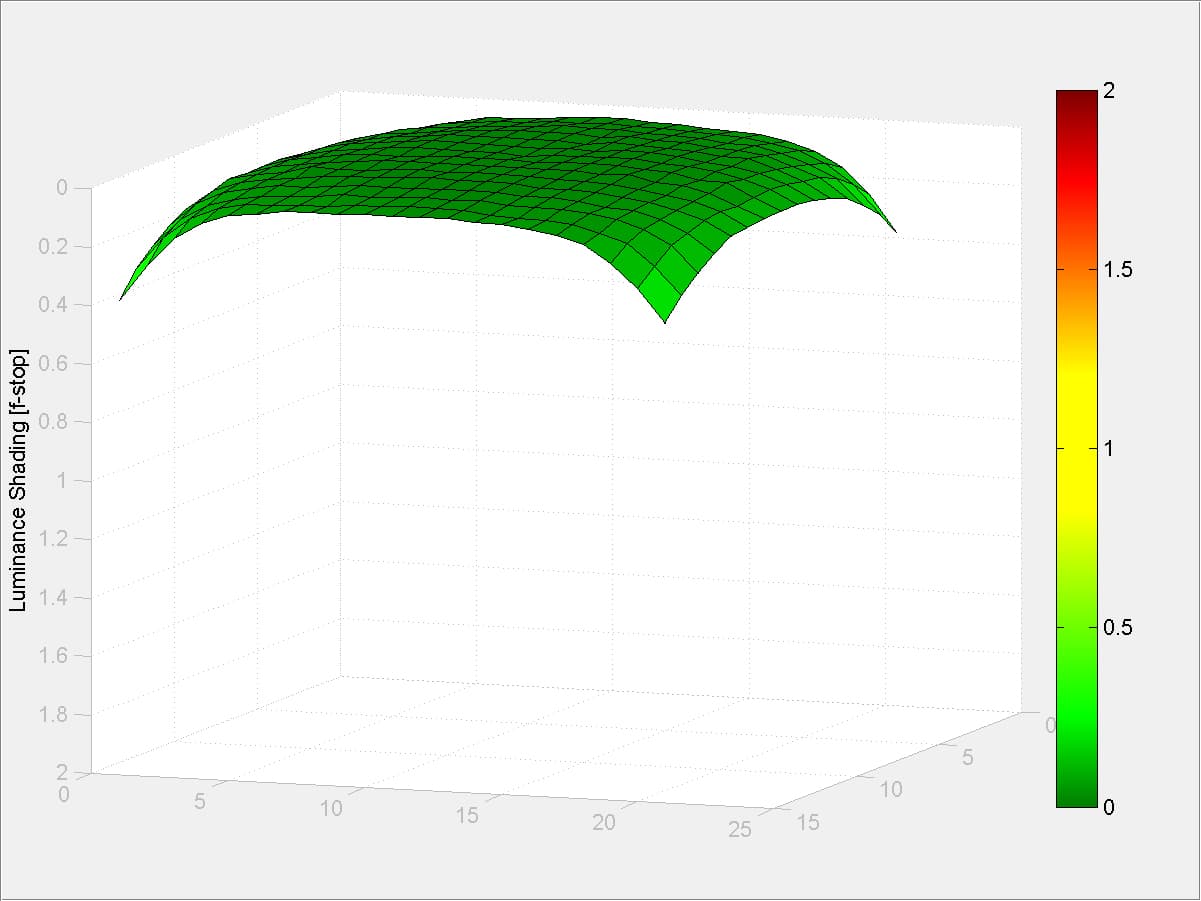
Canon RF 70-200mm F2.8L IS USM, 135mm @ f/4
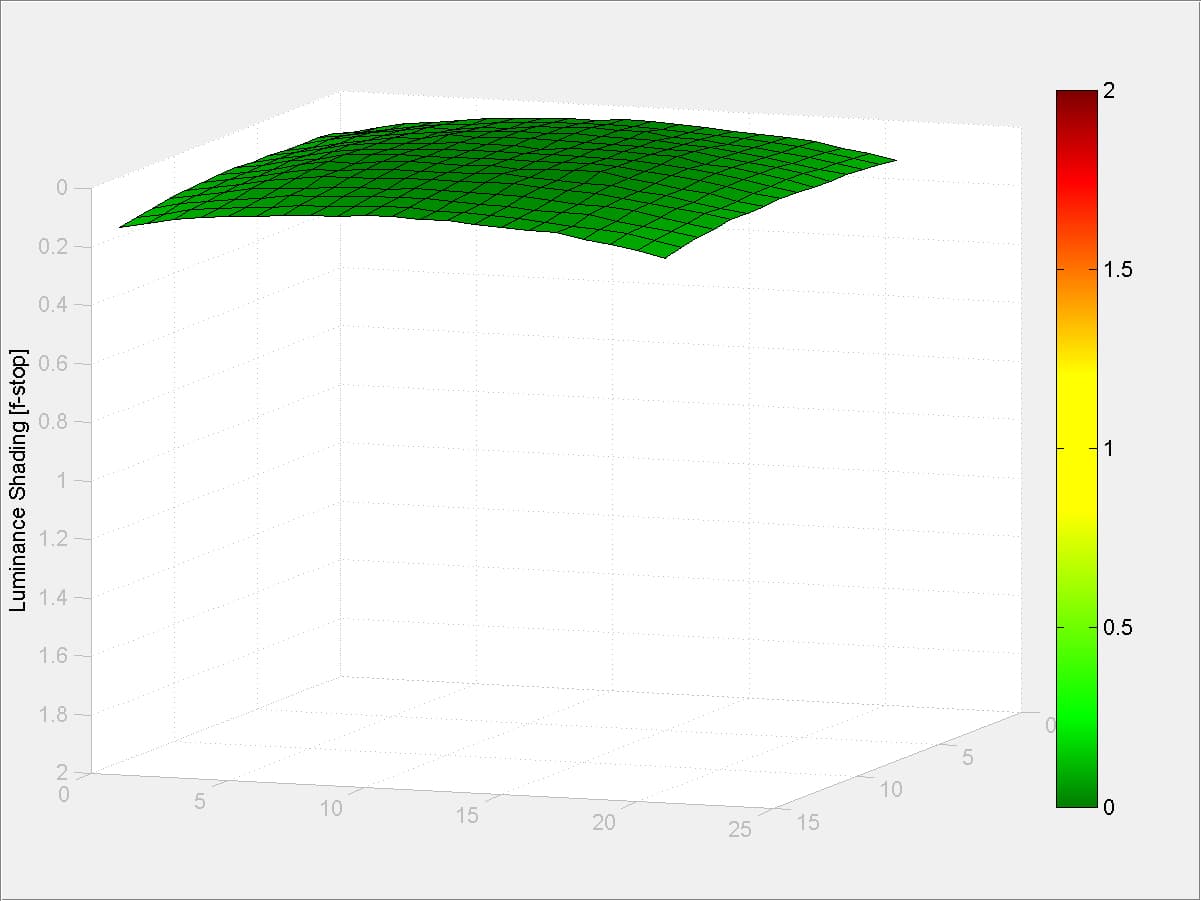
Canon RF 70-200mm F2.8L IS USM, 135mm @ f/5.6
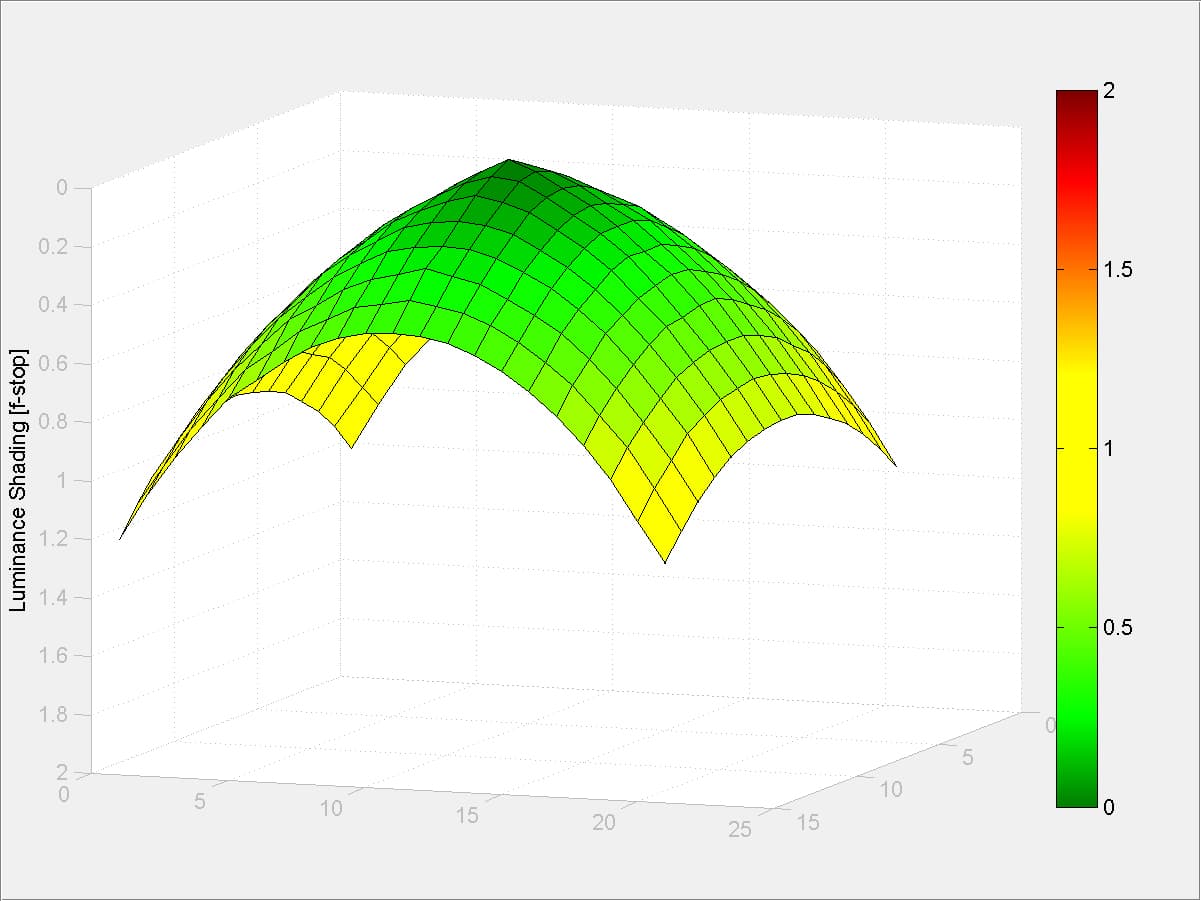
Canon RF 70-200mm F2.8L IS USM, 200mm @ f/2.8
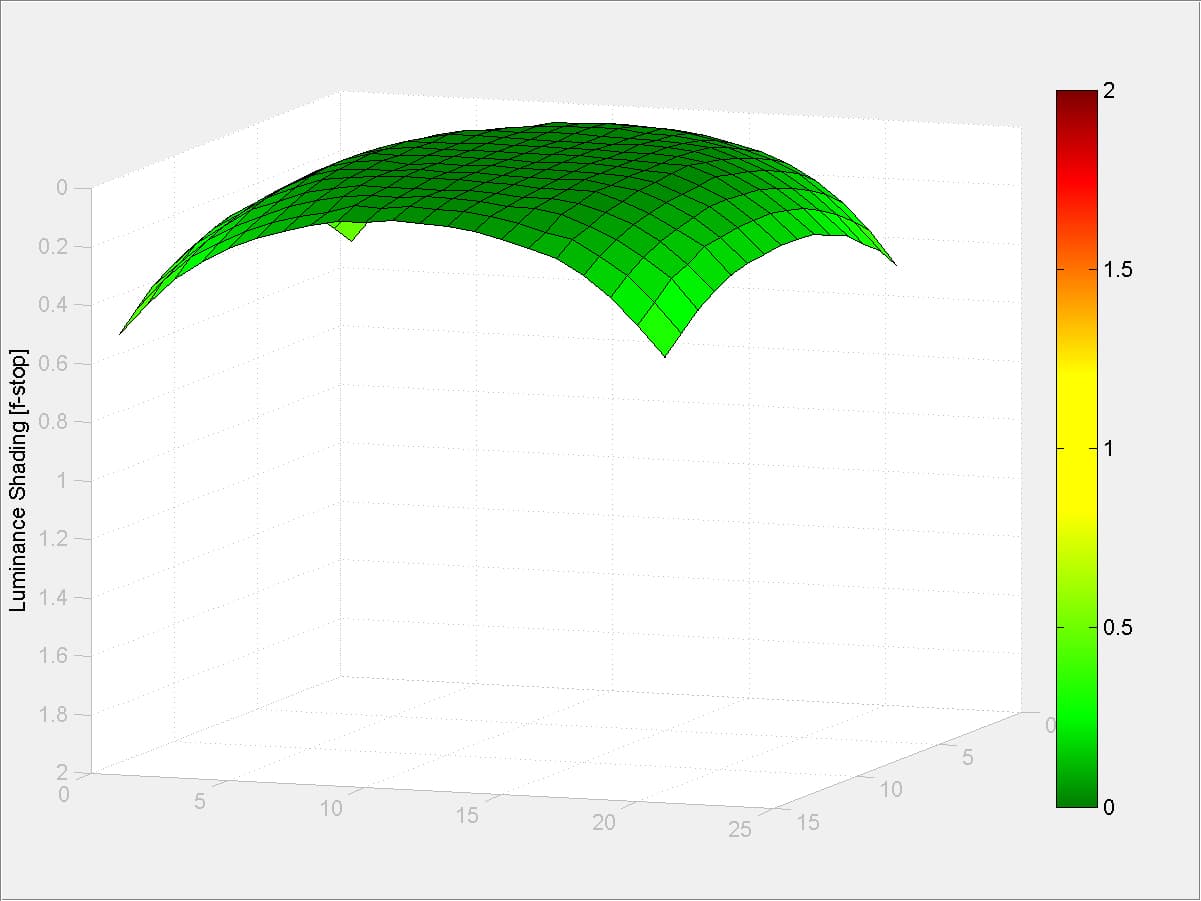
Canon RF 70-200mm F2.8L IS USM, 200mm @ f/4
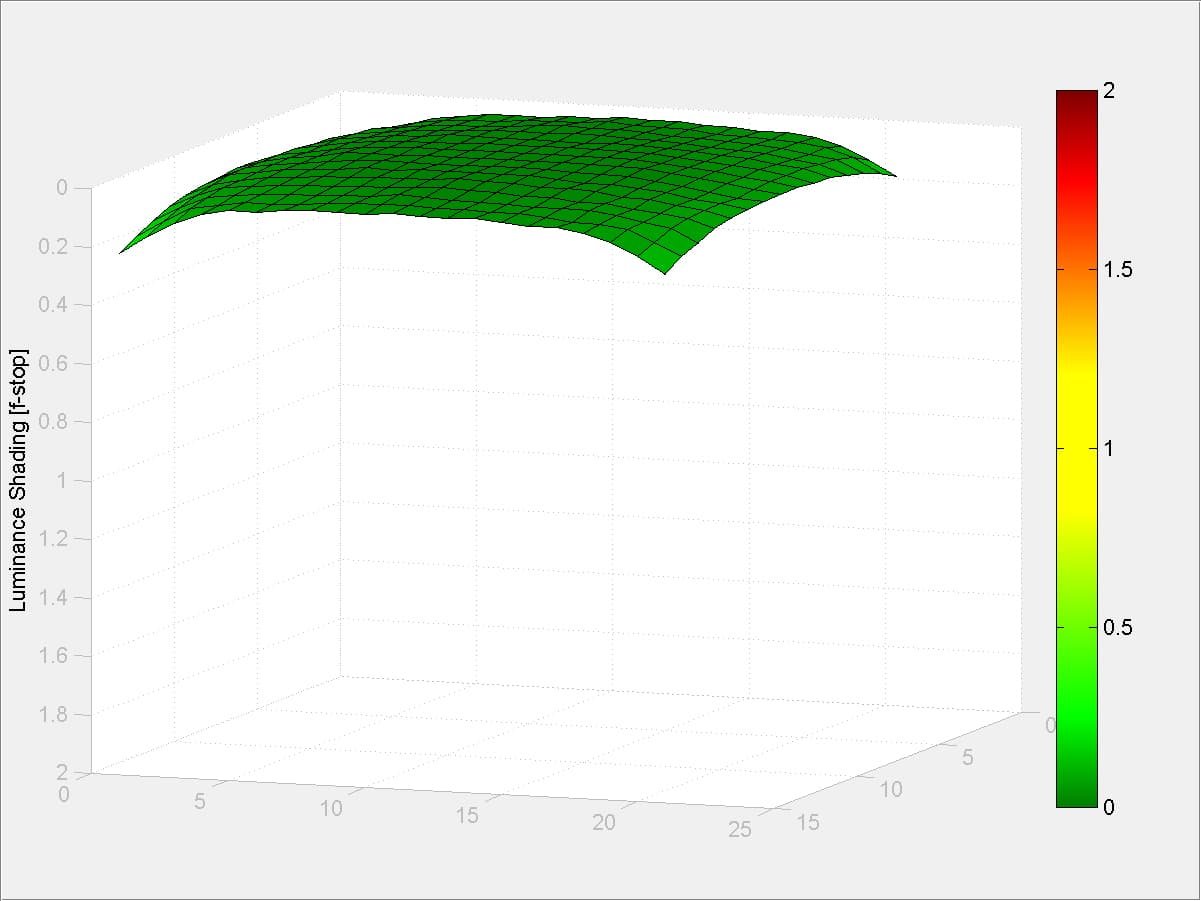
Canon RF 70-200mm F2.8L IS USM, 200mm @ f/5.6
Curvilinear distortion
Barrel distortion is present at 70mm, which soon turns to pincushion distortion around the 100mm mark. The level of curvilinear distortion isn’t a major concern though and only became obvious when I was comparing corrected JPEGs and uncorrected Raw files. To create distortion-free images, you can shoot in JPEG and enable distortion correction or shoot in raw and apply the relevant lens profile corrections when it becomes available.

Canon RF 70-200mm F2.8L IS USM, 70mm, -1.4% TV SMIA (Raw image)

Canon RF 70-200mm F2.8L IS USM, 135mm, 0.9% TV SMIA (Raw image)

Canon RF 70-200mm F2.8L IS USM, 135mm, 1.1% TV SMIA (Raw image)
Canon RF 70-200mm F2.8L IS USM review: Verdict
Canon has good reason to be proud of their latest addition in its trinity of fast aperture, high performance RF lenses. Not only does it uphold the robust build quality and exemplary performance that Canon L-series lenses have gained a high reputation for, they’ve succeeded at making it smaller and lighter than any pro-spec full-frame 70-200mm f/2.8 zoom we’ve tested before without compromising on image quality. The sharpness that’s resolved into the corners is a real strength of this lens and so is the space saving it offers, which will be appreciated by those who like to travel.

Add its fast, quiet focusing, effective 5-stop image stabilizer and customisable control ring to the above and it results in a super compact high speed telephoto zoom that feels fit for the future of Canon’s full frame EOS R system. The only slightly unnerving factor is how much air is pushed in the direction of the sensor when the zoom is retracted, however I witnessed no evidence of dust spots on my images during my testing to suggest this will be a major concern in the long term. Full marks go to Canon for producing a tremendous L-series telephoto zoom in its RF mount series.


